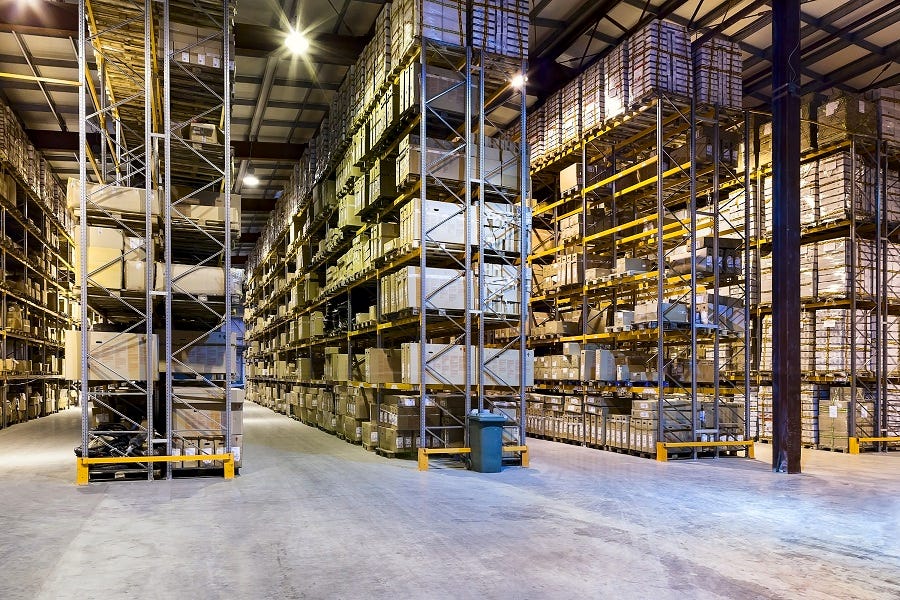How The Internet of Things (IoT) Will Transform Logistics
Share

The Internet of Things, also referred to as IoT, will have a huge impact on the tracking and tracing of goods while they’re in transportation from the manufacturer to the end consumer.
As we mentioned in a previous article where we provided an introduction to IoT in the supply chain, the Internet of Things can be described as physical objects that have been connected to the internet in some way or shape.
In this article, we’ll provide an analysis of the current pain points in global logistics, how individual 3rd party logistics providers are solving parts of the puzzle by using IoT.
Current Pain Point in Global Logistics
Global logistics are hard to manage due to the lack of transparency in the supply chain. While technology has progressed in recent years, many companies still only receive data about the transport of their goods days or even weeks after their goods were delivered at the final destination.
Just consolidating all this data after the fact is a cumbersome task and resolving any issues within the supply chain is nearly impossible as it’s hard to pinpoint exactly where and when something went wrong. The three biggest pain points in global logistics at the moment are:
Counterfeiting
Counterfeiting can take on different forms. Counterfeiters misappropriate someone else’s brand, falsely label products or use fake or inferior components to make a product. Lack of consumer confidence in the provenance of goods can really hurt a manufacturer’s ability to sell its products. This is particularly a concern for companies selling their products in Asia, where counterfeiting is widespread and consumer confidence is low.
Counterfeiting is also an issue that is becoming worse each year as ordering goods on the internet is increasingly becoming the new norm. This encourages a lot of counterfeiters to enter the arena and sell fake products, which in turn leads to further decreased consumer confidence.

Theft of goods
There are many people handling goods in transit and only one of them needs to have ulterior motives for theft to become a big issue. In the current supply chain it’s very easy for someone to sign a form saying they’ve received 49 boxes, whereas the real amount was 50 and they kept one themselves.
For manufacturers it is very difficult to figure out where theft may have occurred as information about the shipment of their goods is usually only available days or weeks after (most of) their products have already arrived at their end destination.
Lack of accurate information on shipping conditions
Many products need to be transported within pre-set environmental conditions, such as within certain temperature parameters. As there is no way for manufacturers to see shipping conditions in real time, some logistics companies falsify the information on how they’ve shipped certain goods.
A shipping company may turn off the fridge or freezer straight after leaving a port to save costs and turn them back on closer to the end destination. When the conditions are checked at that end point, the temperature may well be within the right parameters again but the quality of the products will have been affected already as the temperature parameters were not met throughout the entire journey.
What are individual logistics companies doing with IoT?
IoT devices can connect trucks, ships, and warehouses with the internet and report on GPS and environmental conditions, such as temperature, humidity, and pressure. Some third-party logistics providers have already started employing IoT devices in their trucks, ships, and warehouses and have started reporting those conditions back to manufacturers.
While this is a great development there are still some hurdles to overcome to fully solve the aforementioned biggest pain points in the current supply chain. Theft and counterfeit can be prevented and accurate tracking of shipping conditions provided when the goods are in possession of a logistics provider with an IoT solution, but this doesn’t solve the following issues:

Disparate data sources
Where different logistics providers are used, the information is handed to the manufacturer through different methods as each provider uses their own proprietary systems and software. This means that the manufacturer will still need to consolidate the data from the different sources, which is a time consuming process. On top of that, individual providers may measure and report on different parameters, so if one of the providers in the entire supply chain doesn’t report on temperature, manufacturers end up with incomplete information.
Exposure outside the monitored areas
While theft, counterfeit and reporting of shipping conditions may be monitored appropriately while the products are in trucks, ships and warehouses, this leaves the goods exposed as soon as they leave these environments. As an example, sometimes goods are left out on the tarmac for days in which case they will be unmonitored and can be subject to theft, counterfeit and temperature that’s too high or low.
Data not 100% trustworthy
The logistics providers that report data back to the manufacturers while the goods are in their care do so through their own reporting mechanisms. This means that there is still a high level of trust required from the manufacturers as it’s in the logistics provider’s best interest to not report on any issues while they’re in charge of the products.















